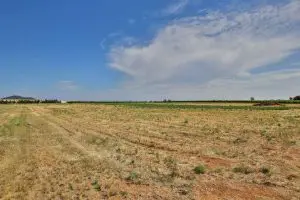APA Group has quickly moved to the second stage of the landmark Mica Creek solar farm in Mt Isa after securing a 15-year contract with the local mining company Mt Isa Mines.
The announcement comes just a month after APA gave the go-ahead to build the first 44MW stage after securing another 15-year off take agreement with zinc miner MM Dugald River.
Now, the solar farm will effectively double in size to 88MW, enabling it to trump the newly opened 60MW Chichester solar farm as the biggest outside the country’s main grid, and APA is even looking at a third stage if it can find another keen customer for cheaper power from renewables.
The solar farm will be a significant size for an isolated grid like that of Mt Isa, and ironic because it help mitigate the soaring costs locks in nearly a decade ago when Glencore originally snubbed renewables by using its influence to commit to a new gas plant.
APA says construction of the now $150 million Mica Creek solar farm will begin in 2022 and should be running by 2023.
It will be co-located with APA’s Diamantine gas fired generator and will be similar in influence to the new Chichester solar farm (pictured above) that is reducing costs, and boosting reliability, in the grid that serves some of the country’s biggest iron ore mines in the Pilbara.
APA CEO and managing director Rob Wheals said in a statement he was pleased to be able to continue to provide APA’s customers with energy solutions that support the North West Minerals Province with affordable and renewable electricity.
“This investment will support APA’s vision for a world-leading hybrid energy grid in Mount Isa and our aspiration to support the further increase of renewable energy penetration for the region,” he said.
“We now have two major APA customers … demonstrating the enthusiasm of customers in the region for integrated energy solutions that can both meet their energy needs and help reduce their operational emissions.
“With supply of renewable energy for the two initial stages now under contract, APA is investigating a potential expansion for a third stage, following strong interest from customers.”
Deputy premier and minister for state development Steven Miles said the speed of the expansion, having only just announced stage one last month, demonstrated the demand from business and industry for renewable energy.
“This project will also provide a boost to employment and the local economy, employing around 300 people during peak construction,” he said. “Queensland is leading the way as we move closer to our target of achieving 50 per cent renewable energy by 2030.”
Good, independent journalism takes time and money. But small independent media sites like RenewEconomy have been excluded from the millions of dollars being handed out to big media companies from the social media giants. To enable us to continue to hold governments and big business to account on climate and the renewable energy transition, and to help us highlight the extraordinary developments in technology and projects that are taking place, you can make a voluntary donation here to help ensure we can continue to offer the service free of charge and to as wide an audience as possible. Thank you for your support.










